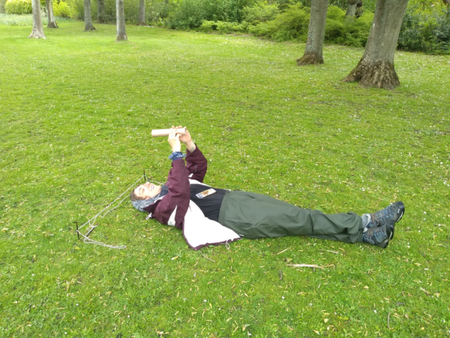A university field-course when students are in different places.
Q2: What do you do if you are a school of biological sciences which prides itself on the range of field courses on offer and a pandemic strikes and all group activities have to stop? We’re certainly not alone in struggling with this one. In 2020, we pulled together information and exercises that students could do mostly online, to provide the theory behind collecting data in the field. This year we wanted to build on this and were determined that our students should get out into the field and apply those theories. Why were we so keen to do this? Well, like baking cakes, real-life field work is often a whole lot messier and more complicated than the neat diagrams and descriptions that you see in textbooks. You have to find and identify your study species, make decisions on the hoof when the species isn’t co-operating and sometimes change and adapt your original plans to fit the local circumstances.
But how could we get our students out in the field? Some were in Aberdeen, others were elsewhere in the UK and a few were in different countries. How could we get them out in the field when everyone could have different sorts of ‘fields’ available and probably different lockdown rules?
Well, we devised a: wherever-you-are-field-course. We set a series of activities in the first week, for example: measure something available to you, wherever you are, for example diversity of birds or height of plants or damage by insects in different locations to compare effects, such as shade and full sun or wet and dry habitats. The students decided what to count and how, depending on where they were and the sorts of habitat available to them. Each day, they collected their data, did some statistics on it, reported back online to their groups, each led by an academic, and discussed their findings. In the second week they devised more complex projects and collected data over a few days. Students worked in parks, gardens, beaches, sand dunes, up hills, down dales, all sorts. And they demonstrated an amazing level of ingenuity: students measured out the areas they were going to sample using string, pizza boxes, lollypop sticks, hula hoops, coat hangers …. We were delighted by the students’ enthusiasm and by their hard work.
And of course, the other connection between field work and cake-baking is that they are both a whole lot more fun when you actually do them, rather than just looking at the pictures in a book.
Image 1 and 2 by Julie Picciau
Image 3 by Martins Plikss


